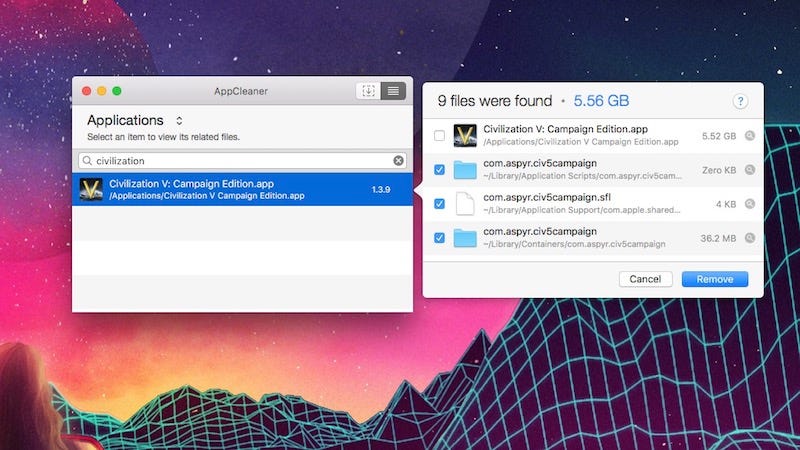Dec 12, 2016 The User Library folder is hidden by default in MacOS Catalina, MacOS Mojave, macOS High Sierra, and macOS Sierra, but some advanced users may wish to show and access the /Library/ folder, which contains preference files, caches, and application support data. With the release of Mac OS X Lion way back in 2011, Apple removed easy access to the user’s Library folder. Although arguably well-intentioned, this change was frustrating for longtime Mac power. Jul 21, 2017 How to View the /Library Folder in macOS Sierra Friday, July 21st, 2017 Author: Steve Sande. Of the many files and folders that make up macOS Sierra, there’s probably none so important to maintaining the “personality” of your Mac than the /Library folder. Sep 27, 2016 As you can see, the icon for the Library folder is faded, which means the folder itself is still hidden. Unhide the Library Folder Permanently. If you don’t want to open “Go To Folder” every time you want to access the Library, you can unhide the folder for. Oct 03, 2018 Inside the home folder on your Mac is a Library folder that stores app-specific files and settings, personal settings, and some data. The files and settings in the Library folder should be left. Jul 06, 2015 Now I see my 'Library Folder' on my iMac, but not on my External Hard-drive or Time Capsule. Can anyone tell me how I can view the hidden 'Library Folder' on my External Hard-drive or Time Capsule. I use Time Machine on my Time Capsule and Carbon Copy Cloner on my External Hard-drive. I need to restore some files from 'Library Folder'.
There are a few ways to transfer your iTunes library from one computer to another: When you get a new Mac, use Setup Assistant (or Migration Assistant, if you’re switching from Windows) to move files—including your iTunes files—from your old computer to the new one. See the Apple Support article Back up and restore your iTunes Library. Nov 27, 2013 - Do not copy the library to your desktop (within the mac) - Rather pull the iTunes folder from the External Drive Directly onto the Music folder on your Mac. Choose 'Replace' button for all files when it is ready to copy. This worked for me to migrate all playlists, ratings, tracks, and the rest of the library. Launch iTunes on your Mac, open its preferences (Edit - Preferences), then click the Advanced tab. Click the Change button next to iTunes Media Folder Location, navigate to the iTunes Media folder on your external hard drive, and click OK. ITunes will now look to that drive for you content.  Feb 01, 2018 Move iTunes using Migration Assistant by Apple This program will close all the running applications on your Mac, So, we will highly recommend you to save your work before you launch this program on your computer. You will also need the Administrative password on your Mac.
Feb 01, 2018 Move iTunes using Migration Assistant by Apple This program will close all the running applications on your Mac, So, we will highly recommend you to save your work before you launch this program on your computer. You will also need the Administrative password on your Mac.
Of the many files and folders that make up macOS Sierra, there’s probably none so important to maintaining the “personality” of your Mac than the ~/Library folder. Inside this folder are many subfolders that contain preference lists (“plists”), database files storing a variety of important information, and many other files that maintain the state of macOS and of the individual apps that run on a Mac. Thanks to the importance of this folder, it’s normally hidden from view. Today we’ll show you a few ways to view the ~/Library folder.
Warning: Don’t play with the ~/Library folder if you don’t need to!
Before we go any further, it’s time for a warning. Don’t throw away or change anything in the ~/Library folder unless you know what you’re doing. Deleting individual files or folders found within ~/Library can cause individual applications or the operating system to malfunction.
When would you want to poke around in ~/Library? Perhaps you’re gaining knowledge about macOS as a developer and want to know how the operating system stores information. Maybe you want to clean out the remnants of an app that you haven’t had on your Mac for several years. In any case, it’s best to remember what your parents told you when you were a kid and were in a place filled with expensive and breakable things — “Look, but don’t touch!”
How To Find Library Folder On Mac Mojave
Method One: Our Friend, the Option Key
The first and easiest way is to use a trick that gives many of the items in the macOS menu bar “super powers” — hold down the Option key while clicking on a menu. In this case, Option-clicking the Go menu in the Finder adds a new menu item — Library — that opens the ~/Library folder (see image below):
As you can see from the image above, holding down the Option key while clicking on the Go menu in the Finder adds one item as seen on the right — the Library folder. Select that menu item and a window similar to the one seen below opens on the Mac screen:
Of these folders, Application Support is quite critical as it holds information for the current user’s apps. You’ll see many “.plist” files; these are XML (Extensible Markup Language) files that can be viewed on the Mac by simply highlighting the file and pressing the space bar to bring up a Quick Look. There are also a number of log files (text-based), temporary files, app plugins, and database files (.db or .sqlite) that are critical to storing settings and data in your favorite apps.
Method Two: Command-Shift-Period
The second method works from any open Finder window, and it uses the keyboard shortcut Command-Shift-. (that dot indicates the period key). This is a fun command, as it makes any hidden files or folders visible in the Finder. On the left in the image below you see my Home folder. Pressing Command-Shift-. makes hidden folders and files appear as shaded icons, shown on the right:

Pressing Command-Shift-Period makes hidden files and folders visible (right image)

See that Library folder in the center of the list on the right? Even though it is shaded, it can be double-clicked to open and view everything that’s in the folder. What’s more, some of the files that are not visible in the ~/Library folder when using Method One appear when using Method 2.
One other thing to note: Command-Shift-. makes these files and folders visible until the next time you use the command or reboot the Mac. If you’re poking around in the ~/Library folder on a Mac that other people may use without having their own logins, be sure to press Command-Shift-. one more time to set things back to hidden once you’re done. Note that Command-Shift-. also makes Library visible in the Finder Go menu without having to press the Option key…
Just remember, anything you change or delete in the ~/Library folder can affect how your Mac or individual applications work, so use these methods to just view hidden files or folders. Don’t delete the files or folders in ~/Library unless you know what you’re doing.
You may need to access content in the user Library folder to troubleshoot problems with your Adobe applications. The user Library folder is hidden by default in macOS X 10.7 and later releases. Use one of the following methods to make the user Library content visible.
How To Find Library Mac
Hold down the Alt (Option) key when using the Go menu. The user Library folder is listed below the current user's home directory.
Note: After you open the Library folder, you can drag the Library icon from the top of that window to the Dock, sidebar, or toolbar to make it readily accessible.
For more information, explanations, and ideas, see 18 ways to view the ~/Library folder in Lion and Mountain Lion.
More like this
Twitter™ and Facebook posts are not covered under the terms of Creative Commons.
Legal Notices Online Privacy Policy
